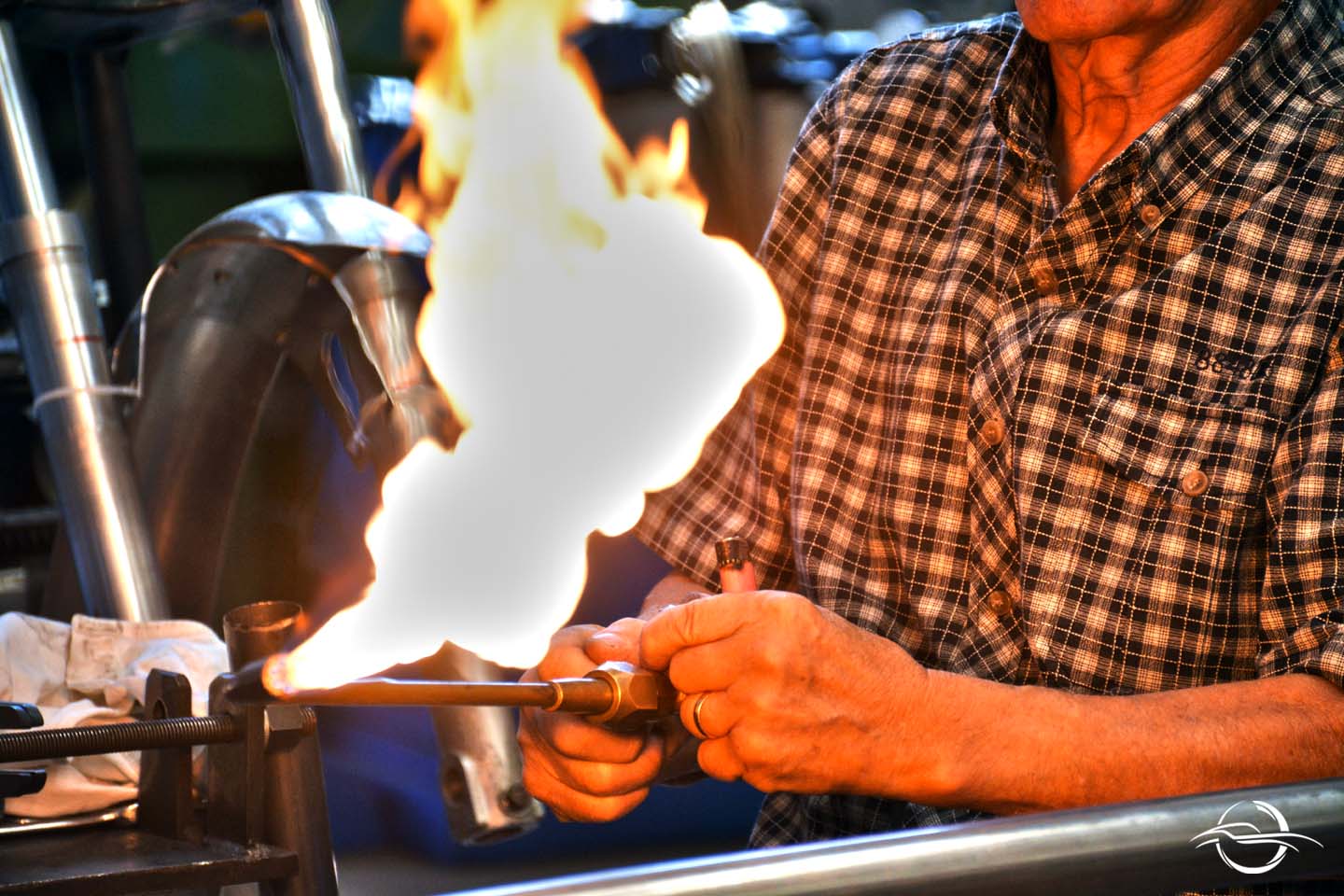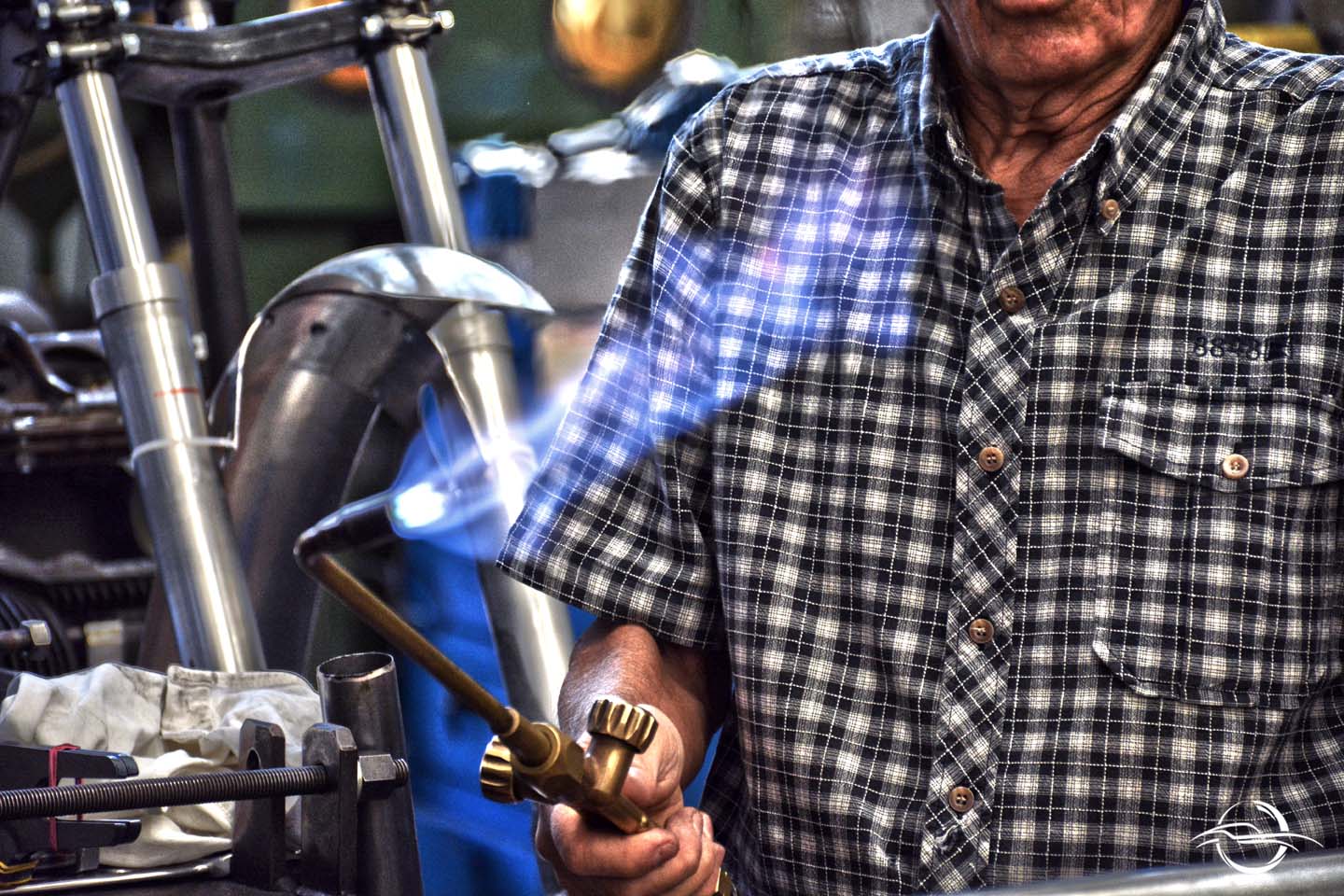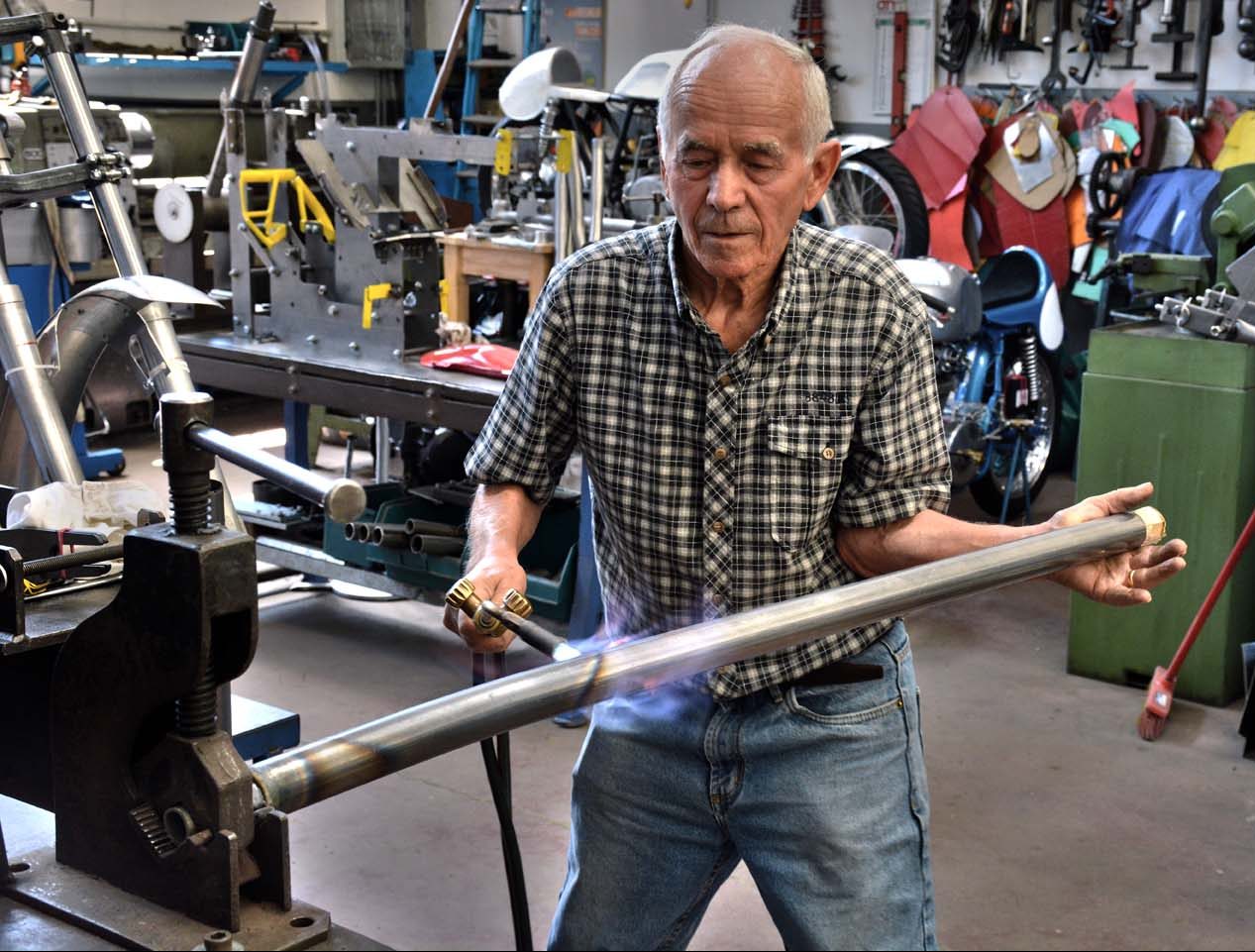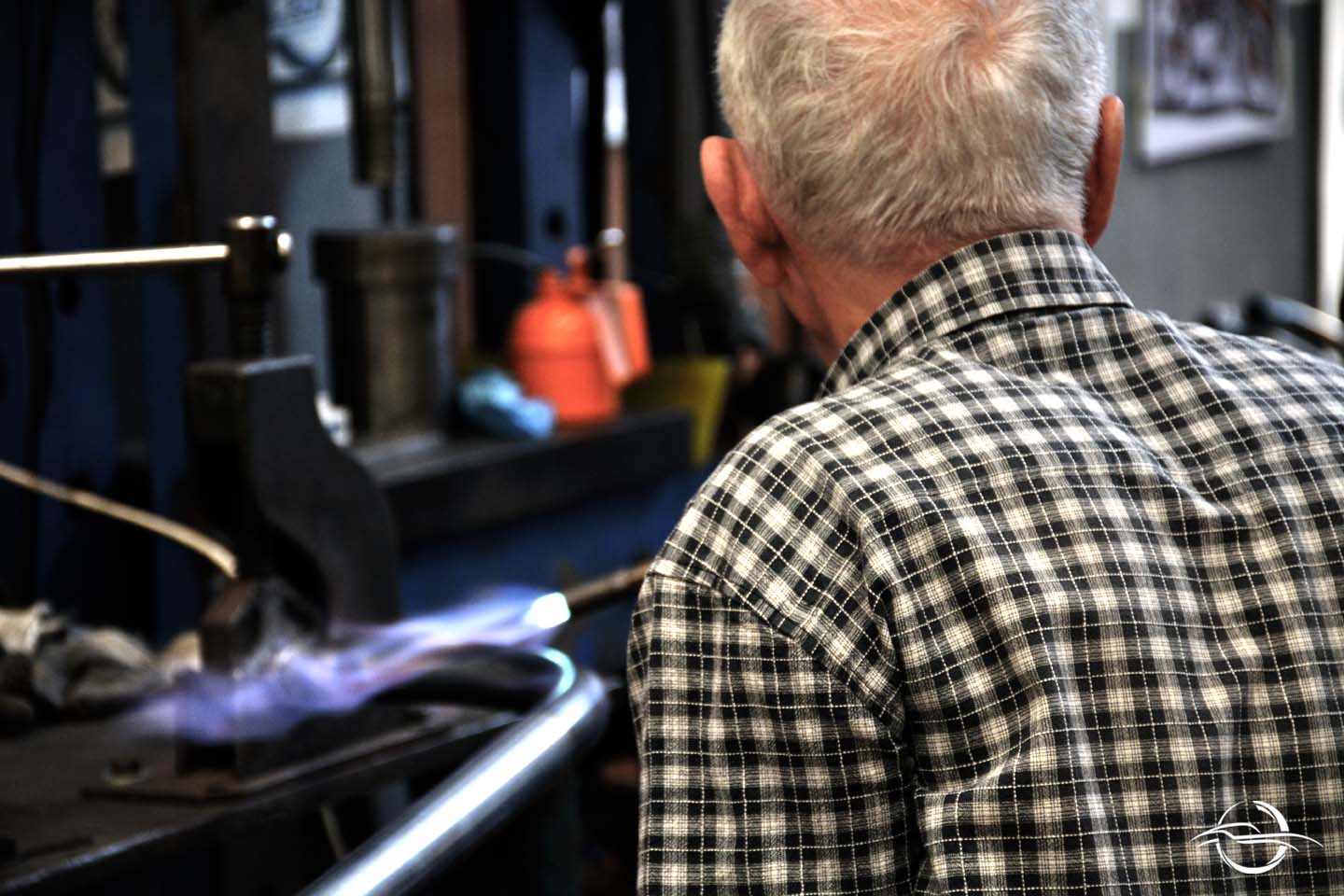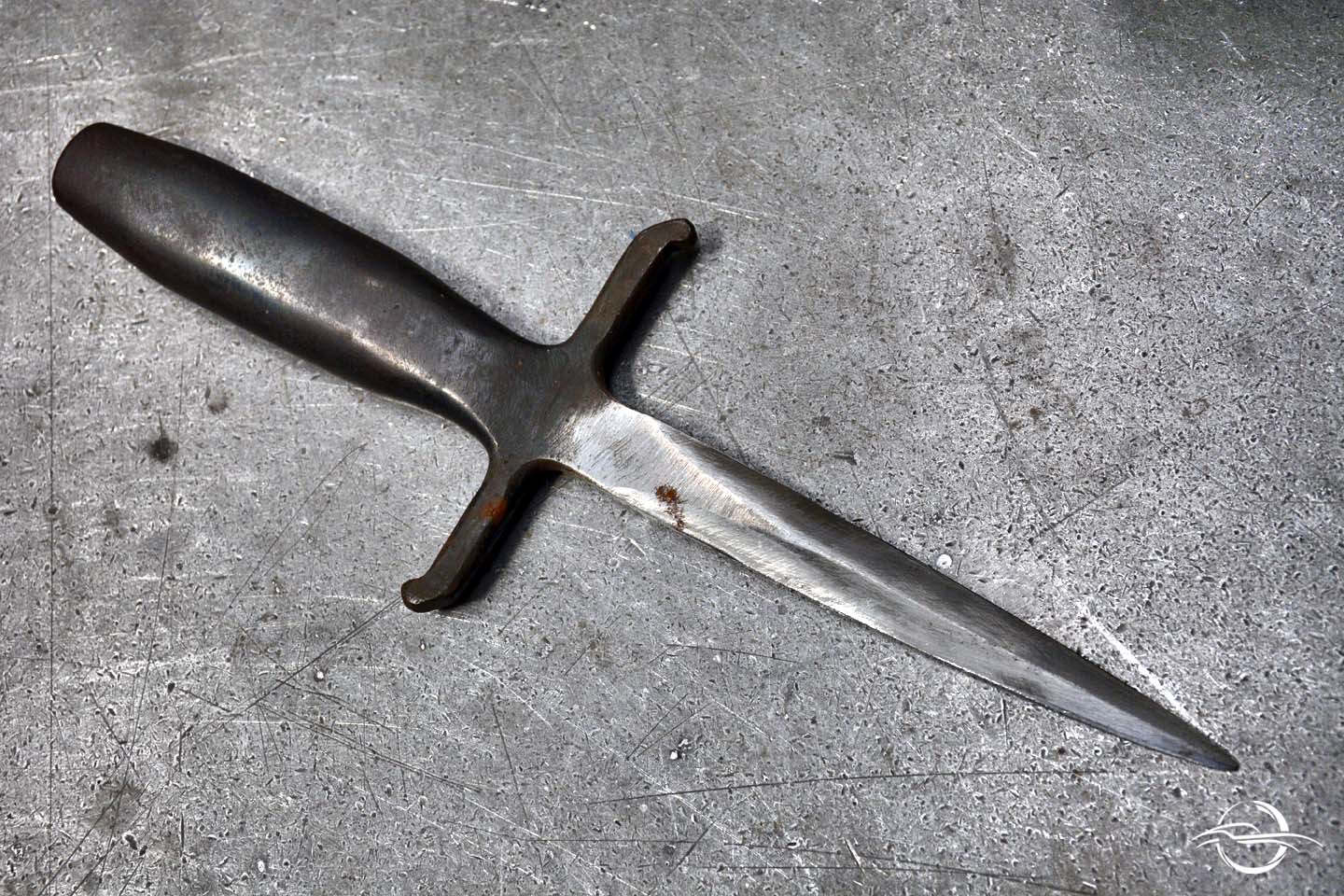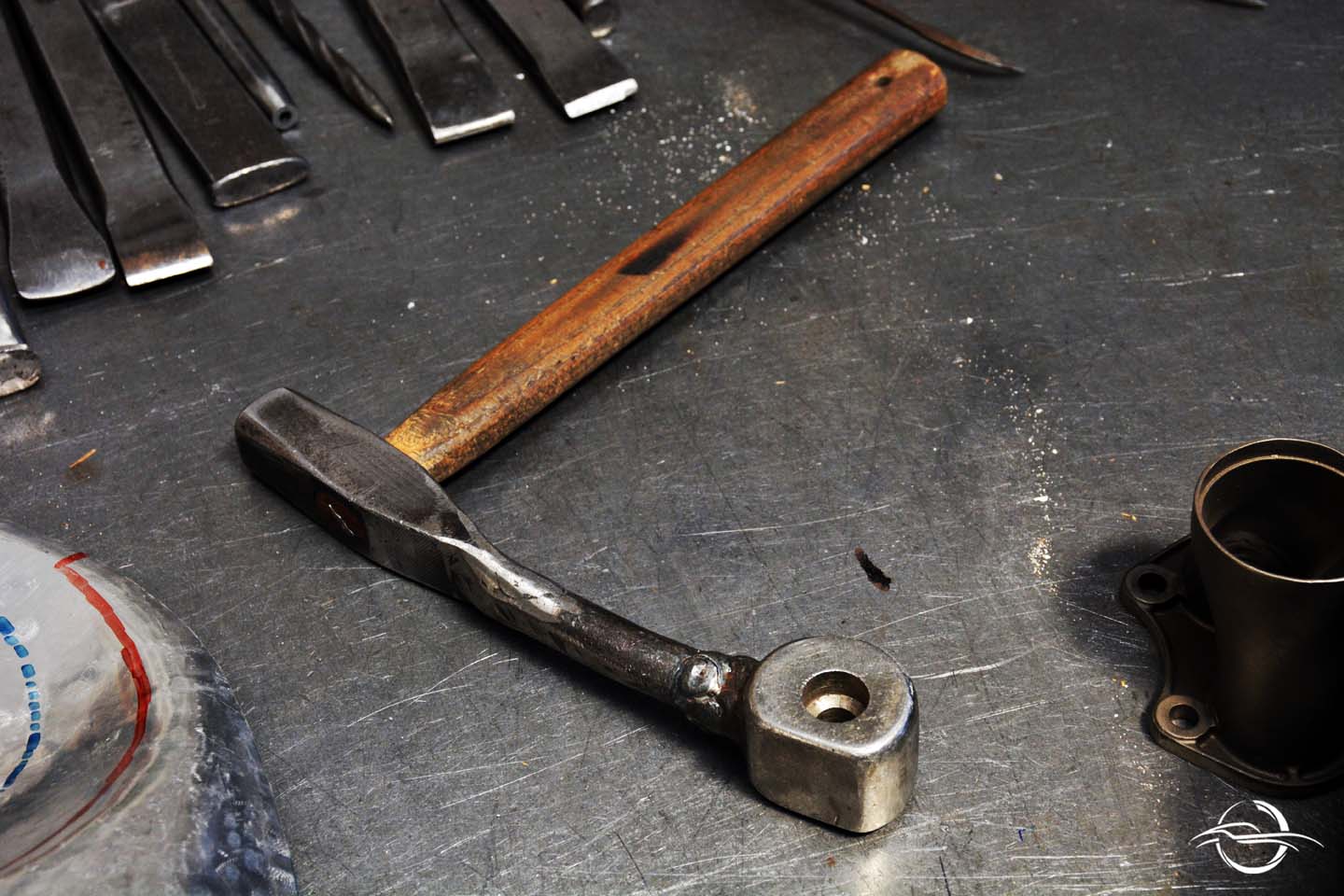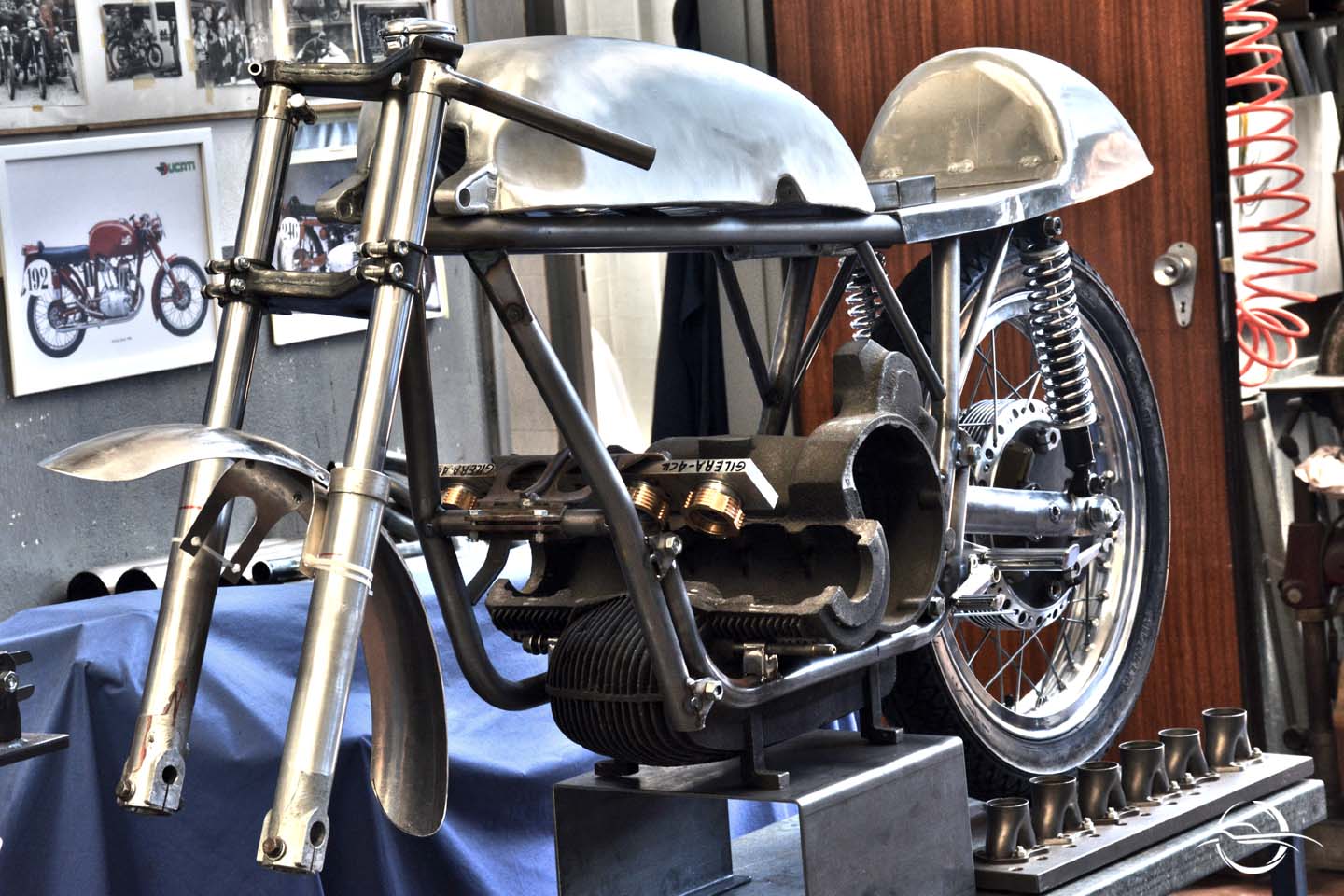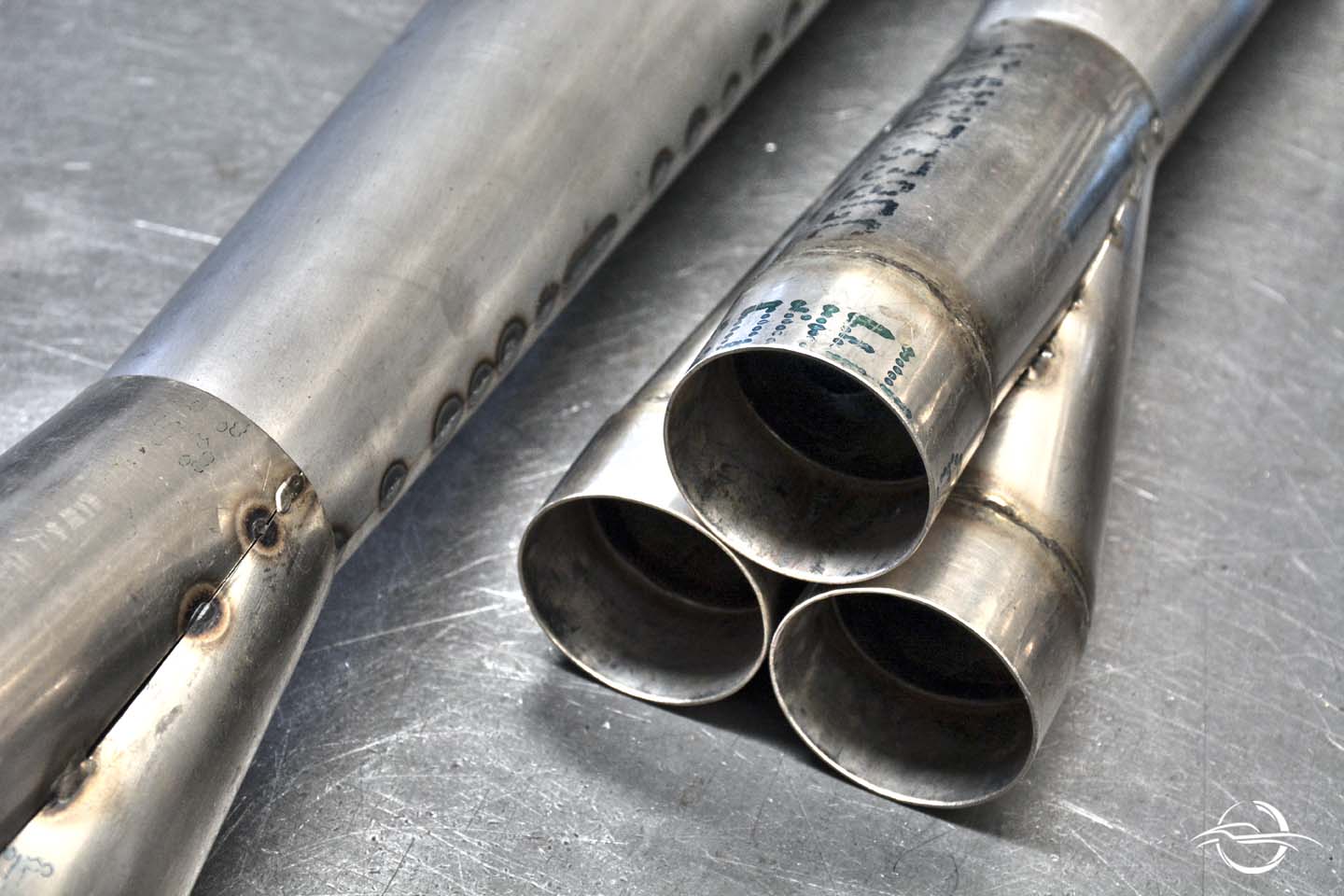The Metal Wizard
That is where, through the years, Tavoni learned his job, until he becomes one of the best panel-beaters around. The small Fumana gained a new nickname – “Mani d’oro” (Golden hands) and Stanguellini in person nicknamed him that.
– I have a brother who worked in the workshop, but he never worked as a panel-beater. When he saw me beating the metal sheet and turn it glossy, he used to go mad… he never understood my job. We had such arguments! You need eye and hand to work on metal sheets: I had both, while he mainly had the hand. You see, when you hammer you may think that I am hammering and breaking nuts, while I’m very focused when I hammer: with both minds and eyes. I have an exaggerated eye for things, and do you know why? At Stanguellini’s we made cars with plumb line and set square. They got us used to have an infallible eye for things, because Stanguellini came to the racing department every day, to see how we worked. Later, things changed: now there are machines which do that. The eye for things was a sacred quality for those of us who did this job. To the extent that, a trained eye also changed the hand’s skills, which started to feel and see. Tavoni explained that to me by brandishing a tube as tall as himself.
– Do you know how you bend tubes? I’ll show you now. You fill them up with sand. However, I filled the racing cars’ brass tubes, of Maserati’s and Ferrari’s, with tar. I bent them without heating them up and then, when I put them under the flam, the tar poured out like wax. I was great at bending tubes. Once, a client who I bent a tube for, even wanted me to sign it as it was so well made: where the curve was, the tube was rounder than where there was no curve!
– And how did you bend it? All at a glance?
– I felt it with my hands. Each person has their own method. There are people who make it become fully incandescent to bend it. I only need it to reach a certain internal temperature, so that I may feel the sand moving. It’s a matter of hands. For example, my wife is great at bending tubes.
– Your wife? Does she work with you?
Amongst the photographs in the workshop, I immediately eyed the image of a beautiful Asian woman. Tavoni shakes his head.
– No, no, she works in a food company. They make 400 trays of mortadella per day! Sometimes, she comes here to give me hand. She’s good. You know, you don’t need strength to bend tubes: you need sensitivity.
On the other hand, Stanguellini, must have been a real training school, where the eye and hand were constantly kept under strict exercise. Often, artisans also made tools, out of their own hand. Tavoni smiles while he tells me about that. It was a whole different world: a world which didn’t take anything for granted. Did you need a hammer? You made it. The same for scalpels or leaf springs to be straightened. You modelled, soldered and tempered the finished product, in the most absurd ways. For example, with urine, which is actually especially salted water: an excellent chemical combination which is always handy, very useful to temper (that is, to harden) iron. Tavoni tells about when his boss asked him to walk through the rows of his colleagues with a bowl, to ask if someone – randomly – needed a pee. And that was the least of things.
Out of the materials used to temper the working tools, there was also cyanide. “This is how we did it: you heated up the piece to be hardened, I – with my hands in the box – got the cyanide, I put it on the incandescent piece and I heated it up a little more, so that the powder penetrated into the material.” Things from another world, which would make a health and safety inspector turn pale today… but you know, work is the son of its own time, things like the 626 regulation were pure science fiction. You may guess that diminutive young guy, with golden hands and unmeasurable passion had no such reservations. A guy who, often, between one job and another, ended up giving shape to things which, didn’t have anything to do with work. “Can you see this dagger? I made it with a piece of an engine, the rod which opens and shuts valves. This piece of iron happened to be in my hands, I started warming it up and beating it and a dagger came out of it. I was 13-14 years old. When they went out to eat and they all left, I went to buy a sandwich and 10 minutes later, I was already there to work. On some days, I didn’t even eat to solder!”
The season at Stanguellini was long: Tavoni started there when he was a little older than a child, and he came out of there when he was a man: with a professionalism to prove the proverbial “golden hands”. The next step was Lamborghini. With the plants moving, Tavoni – like many others – decided to leave. And he moved to a whole new world, which didn’t have anything to do with cars: the world of kitchens, the difference didn’t only lie within the product, but also in the production method. They were industrial.
– We made 25 thousand kitchens per month. I was the kitchen’s chief… which means that I got only told off sometimes, and that was it. I had 150 women who imprinted metal sheets. Each job, each industry, has its own interesting side. There, I learned things which were unknown to me. I watched them and I told myself: how… do we make 100 pieces in ten minutes?
– Please be honest, curiosity aside, you missed the world of cars and you couldn’t wait to retire to go back to it.
– Well, retirement: the truth is that I never thought about retirement. Then, once day, a friend of mine told me: “Wait a minute, you’re already done”, I was 51 years old, it was 30 years ago. On the other hand, I started early. We were children, we weren’t actually supposed to be working: when the checks came, we hid away.
– So you retired. And you actually continued to work anyway.
– I continued to work with brass… and I made many silencers: in fact, everybody knows me as “the guy of the silencers”. A guy came and asked me: will you make me a silencer? Because the Japanese motorbikes, just like the cars, made paper-thin silencers. If you use it a bit and you start it off many times, the silencer gets a hole in it almost straight away. So I started to create silencers for Japanese motorbikes.
By International Classic, written by Martina Fragale
Photos: Tommaso Ferrari for International Classic © 2017
Keep following the story Danilo Tavoni, The Panel-beater – Chapter 3
Read also:
Danilo Tavoni, The Panel-beater – Chapter 1


